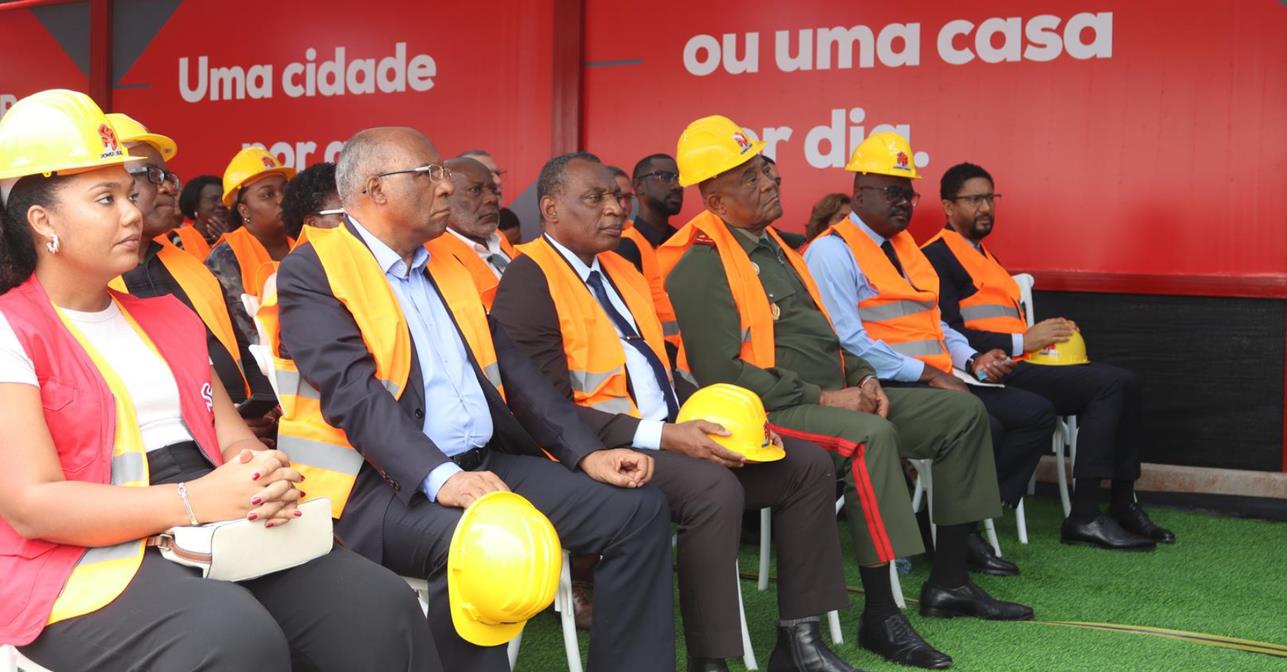
Date27.08.24
Location Africa
Event
On July 2, 2024, the construction company Power2Build – in partnership with COBOD, Dar, and others – presented the BOD 3 3D printer for the first time in an event held in Luanda, Angola. Designed for printing concrete structures, the BOD 3 3D construction printer (their latest and largest model) was produced by the Danish company COBOD, a world leader in the development of concrete 3D printing technology.
The ceremony was held at the construction company's yard and was attended by architects, engineers, business leaders, and innovation enthusiasts. During the event, attendees had the chance to see the machine in action and learn more about future projects using this technology in Angola.
An exciting new technology – with tremendous implications for the construction industry
The inauguration of this new technology aligns with Dar’s research & development agenda on innovation with impact, particularly in 3D printing, which has exceptional potential to disrupt and modernise the construction sector and reduce cost and waste, while still delivering more performant and efficient designs.
Dar recognised the tremendous potential value of 3D printing and additive manufacturing very early on and launched several initiatives to capitalise on this exceptionally exciting new technology and bring its benefits to our clients and host communities. Indeed, Dar has collaborated extensively with technology consultant Autodesk and other 3D printing specialists to experiment with digital manufacturing methods and break away from existing constraints by promoting a leading role for 3D printing technology in both commercial and research projects. Our company has also partnered with research universities to test every aspect of the 3D printing process, from experimenting with the technology itself to trying our different materials with different specifications, including specific materials such as special concrete admixtures—that can be used for 3D printing purposes.
Dar’s 3D printing specialists hail from a variety of multidisciplinary backgrounds including material engineering and research, digital practice, information technology, mechanical and automation engineering, computational design, and structural and civil engineering. These Dar experts continue to pursue the applied automation of design optimisation with the help of AI, to ensure that our clients receive the best the industry has to offer and to create better, more efficient, and more sustainable solutions for our host communities.
Experimenting with and developing 3D printing technology
As a proof of concept, Dar and Autodesk collaborated on the Smart Bridge project – an example of how generative design, 3D printing, robotics, and artificial intelligence can be used to create exceptional new structures. The first outcome of this groundbreaking partnership was the 2-m Smart Bridge, which helped reimagine how large-scale civil infrastructure can be built in the future. The generative design process used by Dar’s engineers allowed for significant material savings, especially when combined with a lattice structural system, making it possible to save up to 80% in material compared to conventional designs. These savings may also account for the added benefit of additive manufacturing in avoiding formwork and practically eliminating waste, resulting in a lower overall carbon footprint. Awarded the 2021 Autodesk Excellence Award in Product Design and Manufacturing, the Smart Bridge was a proof-of-concept that construction can be smarter, more visually arresting, safer, more sustainable, and more innovative.
Building on the success of the two-metre Smart Bridge, the second outcome of Dar’s research venture with Autodesk was a five-metre bridge. The new structure empowered the research team to experiment with improved printing practices and recycled/recyclable materials, test the possibility of printing in-situ with robots on construction sites and refine the process of creating intelligent infrastructure. The project's objective was to test printing workflows, technologies, and innovative materials to facilitate sustainable and effective 3D printing for buildings, bridges and large-scale infrastructure in the future.
Beyond the lab, Dar has already used its expertise in designing for 3D printing in real projects. Qatar’s unique “Desert Nest” Pavilion for Expo Floriade 2022, for example, won the Guinness World Record for the tallest freestanding 3D printed concrete tower. The Pavilion merges a traditional concept with cutting-edge 3D-printing construction methods and sustainable materials, highlighting Dar’s commitment to creating more sustainable designs.
The inauguration of the BOD 3 3D printer in Luanda, Angola highlights the country's commitment to innovation and technological development in construction, opening incredibly exciting new opportunities.
